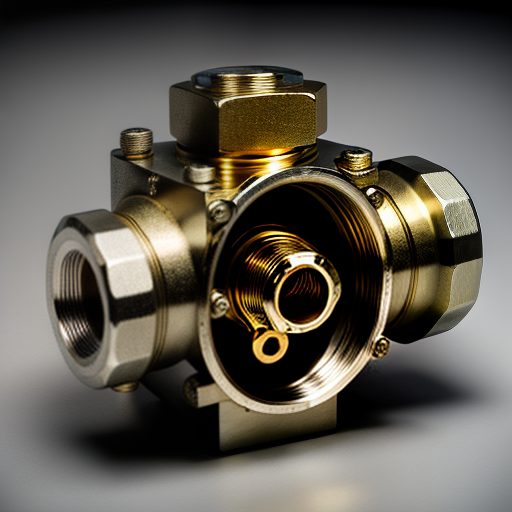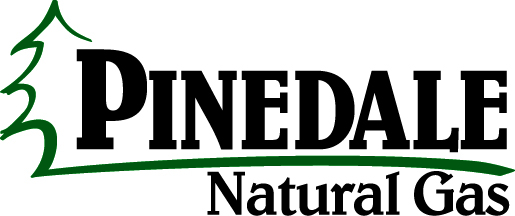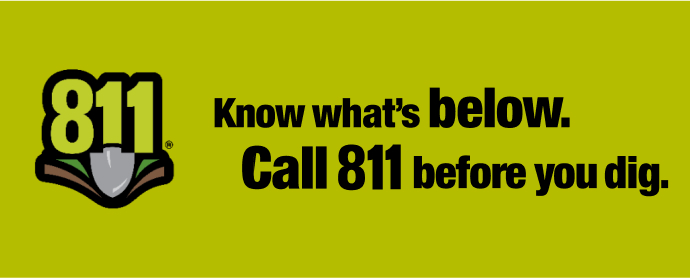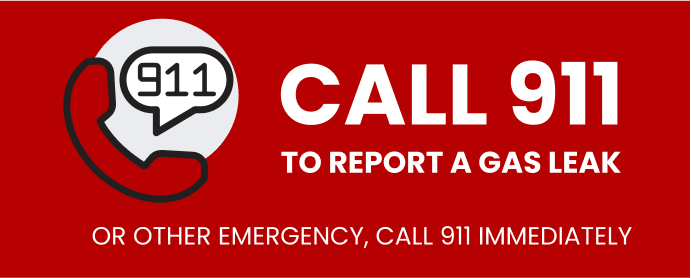ABOUT GAS PIPELINES
Pipelines are the only practical means of transporting natural gas. Pinedale Natural Gas operates about 65 miles of gas transportation and distribution pipelines. These are part of a 1.5-millionmile national underground pipeline network. Most Americans are unaware of this transportation network that delivers about 25% of the energy that drives our economy. Look for yellow Pipeline Markers along roads and cleared corridors with no powerlines. Lines are shown on the National Pipeline Mapping System at npms.phmsa.dot.gov.
All gas companies are subject to regulation by the USDOT US Department of Transportation and state agencies. Our operations are regularly inspected for DOT by the Wyoming Public Service Commission. DOT requires us and other pipeline companies to monitor and continually improve the safety and integrity of pipelines. Each company has programs to qualify its workers and keep them substance-free, to increase public awareness about pipeline safety, and to avoid hazards through damage prevention. Because of DOT oversight, gas pipelines are the safest transportation system in the US.
How to Recognize a Pipeline Leak:
- LOOK for fire near pipeline, a white cloud or fog, dying plants in a pattern amid healthy ones, unusual blowing of dirt or persistent bubbles in water.
- LISTEN for hissing or roaring sound.
- SMELL for pungent odor, similar to sulfur or rotten eggs.
Similarly, if you suspect any unusual odors or noises around your house (other than a soft whoosh-whoosh near your meter), call us immediately.
If you recognize or suspect a Leak around your House or a Pipeline
- LEAVE the area immediately, on foot, and travel upwind, avoiding vapors.
- ALERT others in the area to leave.
- Don’t try to fight a fire
- Don’t turn ON or Off a light or electrical switch; Don’t use your home telephone.
- Don’t light a match, start a car or an engine.
- Abandon any running equipment.
- Dial 911 from a distant house or mobile phone outside the leak area.
- Then you can call us at 307.367.4427 to give us your location. Please stay nearby to give first responders and us the facts.
Most gas leaks are harmless. Don’t try to fix a leak, work on a gas meter or regulator, turn off valves or fight a gas fire – get safely away and call immediately
Call Before You Dig. The majority of pipeline damage is caused by digging near buried pipelines. State laws require anyone planning to dig or excavate to get information on type, location and depth of all underground facilities in the area.
Even in your own yard!
- All locate requests must go to One-Call “811”.
- Locate requests must be made at least 48 hours or 2 business days before digging.
- DON’T fax or email a locate request to PNG.
- We cannot respond to requests made directly to our local office.
Gas Meter Safety. The gas meter must be protected from damage and obstructions.
- The index must be visible to a meter reader.
- The pressure regulator has a vent which must not be blocked.
- Be careful to keep snow and ice from the roof, driveways and walks off the meter and regulator.
- Most meters are installed in a location out of harm’s way. Contact use if you believe the meter is subject to damage by ice falling off roofs or vehicle traffic.
Protect your vents. Most natural gas appliances are vented to the outside, and some of them have intakes for outside combustion air. Make sure that vents and intake ports on the roof and walls are not blocked by ice or snow or physical barriers.
Carbon Monoxide or “CO” is a very poisonous gas that is invisible, odorless and tasteless.
CO is produced by incomplete combustion of a carbonbased fuel (natural gas, propane, motor fuels, wood, coal). Many appliances and machines can produce CO, including gas appliances with blocked or leaking vents or not enough fresh combustion air.
Symptoms of Carbon Monoxide poisoning:
- Dizziness, headaches, fatigue, sleepiness.
- Sudden flu-like illness, nausea, vomiting.
- Fluttering or throbbing heart beat, cherry-red lips, skin pallor.
- Unconsciousness, brain or heart damage. Death.
If you suspect Carbon Monoxide poisoning:
- Move all occupants into fresh air outdoors.
- Call 911 for emergency help.
- Provide first aid, as required.
- Open the windows and ventilate the building.
- Shut off suspected appliance and call us.
“Smelling gas” is not usually CO – install a CO Detector to be safe, on each level of the house.
Do you have Buried Gas Piping? The gas utility is required by pipeline safety regulations [49 CFR Part 192.16] to periodically notify our customers that we do not maintain customer-owned buried piping.
We are generally not responsible for maintaining anything downstream of your gas meter. If you have underground gas lines after the meter, you should have them periodically checked for leaks or corrosion. Any problems you find should be promptly repaired.
The gas utility cannot do this work. We will refer you to local contractors who can assist in locating, inspecting and repairing your buried piping and other gas facilities.
Pinedale Natural Gas has about 2100 gas utility customers in and around Pinedale. Please contact us for service or further information.

WHAT’S AN EFV?
An Excess Flow Valve, or EFV, is a device that automatically closes and restricts the flow of natural gas if an underground pipe is broken, completely cut, or torn apart. Such damage usually results from some type of excavation or digging. An EFV may also restrict the flow if the gas meter is damaged. This damage usually results from a vehicle impact or, on rare occasions, from a large snow load.
WHERE IS AN EFV INSTALLED?
The EFV is installed on the service pipeline that runs underground between the gas main (usually located in or near the street, alley or easement) and the Pinedale Natural Gas meter on the customer’s property.
WHAT DOES AN EFV DO?
Because the EFV restricts the flow of gas, it reduces the potential for firerelated property damage, personal injury, and death. Installation of an EFV will not protect against customer appliance malfunction or customer houseline gas leaks, small punctures in the underground pipe, or gas meter leaks. An EFV may not protect against damage to pipelines from earthquakes or flooding. It’s also important to understand that an EFV doesn’t shut off the flow of gas completely. Some leakage may still occur and result in a hazardous condition. Anyone performing an excavation is responsible for immediately contacting Pinedale Natural Gas to report any damage to gas facilities.
DOES MY SERVICE HAVE AN EFV?
Pinedale Natural Gas has installed EFVs on most new or replaced service lines built after June 2008. If you’d like a cost estimate to have an EFV installed at your residence, or if you’d like to find out if you already have an EFV, please call the Pinedale Natural Gas at 307-367-4427 for information. Since the EFV will be installed on the Pinedale Natural Gas pipe, only Pinedale Natural Gas or its approved contractors may perform the installation.





